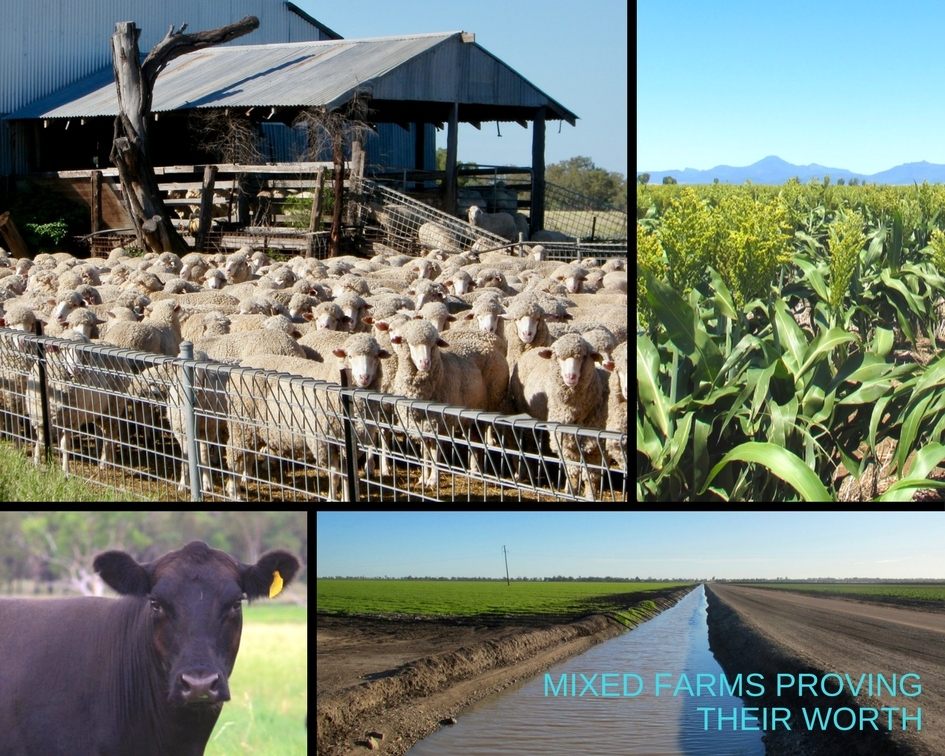Mixed farms proving their worth

The ability to diversify and spread risk on farm has never been more important with 2017 proving weather and market conditions are as variable and unpredictable as ever.
It’s looking like national production of most major crops will fall by 39 per cent this year, according to the ABARES quarterly crop report, thanks to low rainfall and unseasonal high temperatures.
While 2016 broke cropping records, the speed with which farmers have returned to earth is blistering. Friendly interest rates have been helpful in softening the blow for some, but should nonetheless be handled with care at times of such inconsistent prevailing weather patterns.
Cattle have followed a similar negative trend, being bought down a peg in recent months, and the EYCI is now tracking at its lowest level in 15 months.
But in amongst the chaos there’s been a few commodities quietly plugging away on an uphill trend, saving the bacon of mixed farmers across the country.
The consistent rise and rise in the value of sheep meat and wool over recent years has seen mixed farmers paying much closer attention to their flock.
Once seen as a sentimental addition to the broad acre farm, sheep and wool have been performing so well it’s prompted some farmers to turn parts of their secondary cropping country back to pasture.
Wool continues to trend upwards while sheep meet, lamb and mutton are all on the rise to meet increasing demands in the market place.
Cotton has also been firmly on the agenda for mixed farmers; with the high risk, high profit crop drawing in a new wave of first time growers in recent seasons.
While the potential for irrigated cotton is obvious for those with access to water, the development of new dry land cotton varieties has resulted in opportunities for those in more marginal areas.
The varieties are much more heat and drought tolerant than in the past, and for dry land farmers who can snag a wet summer it’s a sure-fire way to ease the pain of a failed winter crop.
Despite the turmoil around North Korea and the destructive weather patterns in the US, a bright spot that remains for Aussie exporters has been the low dollar staying under 80c US, although in recent days it has trended upwards.
Granted the ability to turn a hand to different crops or livestock and guard against further losses in some areas of farming, the outlook remains promising.
by Michael Guest in Latest News
Share this post
Posts this year
- October 2024 (1)
- September 2024 (1)
- August 2024 (1)
- November 2023 (1)
- June 2023 (1)
- February 2023 (2)
- November 2022 (1)
- October 2022 (1)
- July 2022 (2)
- June 2022 (1)
Archived Posts
- Posts in 2023
- Posts in 2022
- Posts in 2021
- Posts in 2020
- Posts in 2019
- Posts in 2018
- Posts in 2017
- Posts in 2016
